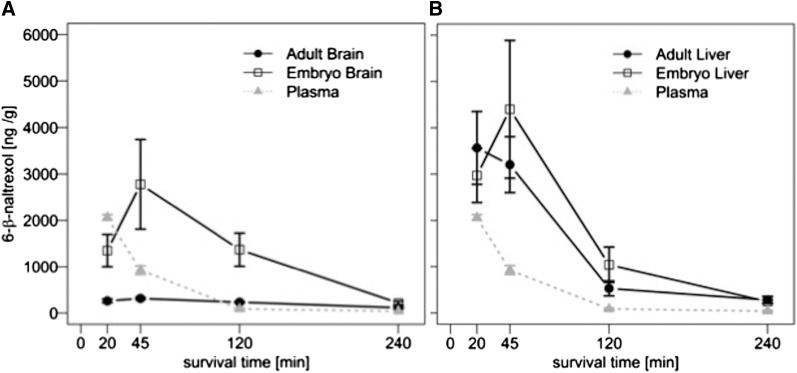Fig. 1.
6β-Naltrexol levels in embryonic and adult brain and liver at different survival times. (A) 6β-naltrexol levels in embryonic and adult brain at four different survival times after a single drug injection. (B) 6β-Naltrexol levels in embryonic and adult liver at four different survival times after drug injection. In (A) and (B), the curve for adult plasma is superimposed for comparison with solid tissues (note: units for plasma = ng/ml). The difference between embryonic and adult levels of drug was evaluated using a noncompartmental model (AUC; see Results) over all four survival time points (CIs were determined by the bootstrapping method; see Materials and Methods and Results). Secondarily, we note that the differences in brain were mathematically significant at the individual 20-, 45-, and 120-minute survival times using t tests (20 minutes, P < 0.05; 45 minutes, P < 0.01; 120 minutes, P < 0.01). n = 2 embryo brain pools (each independent embryonic sample consists of pooled brains from one litter; see Materials and Methods) and 3 adult brains at 20-minute survival, 3 embryo brain pools and 7 adult brains at 45 minutes, 2 embryo brain pools and 4 adult brains at 120 minutes, and 2 embryo brain pools and 4 adult brains at 240 minutes. n = the same for liver. Thus, in sum the AUC analysis incorporates 9 independent samples of fetal brains and 18 independent samples of adult brain (adult samples = 9 dams plus 9 additional nonpregnant females of matching age), and an equal number of liver samples.

